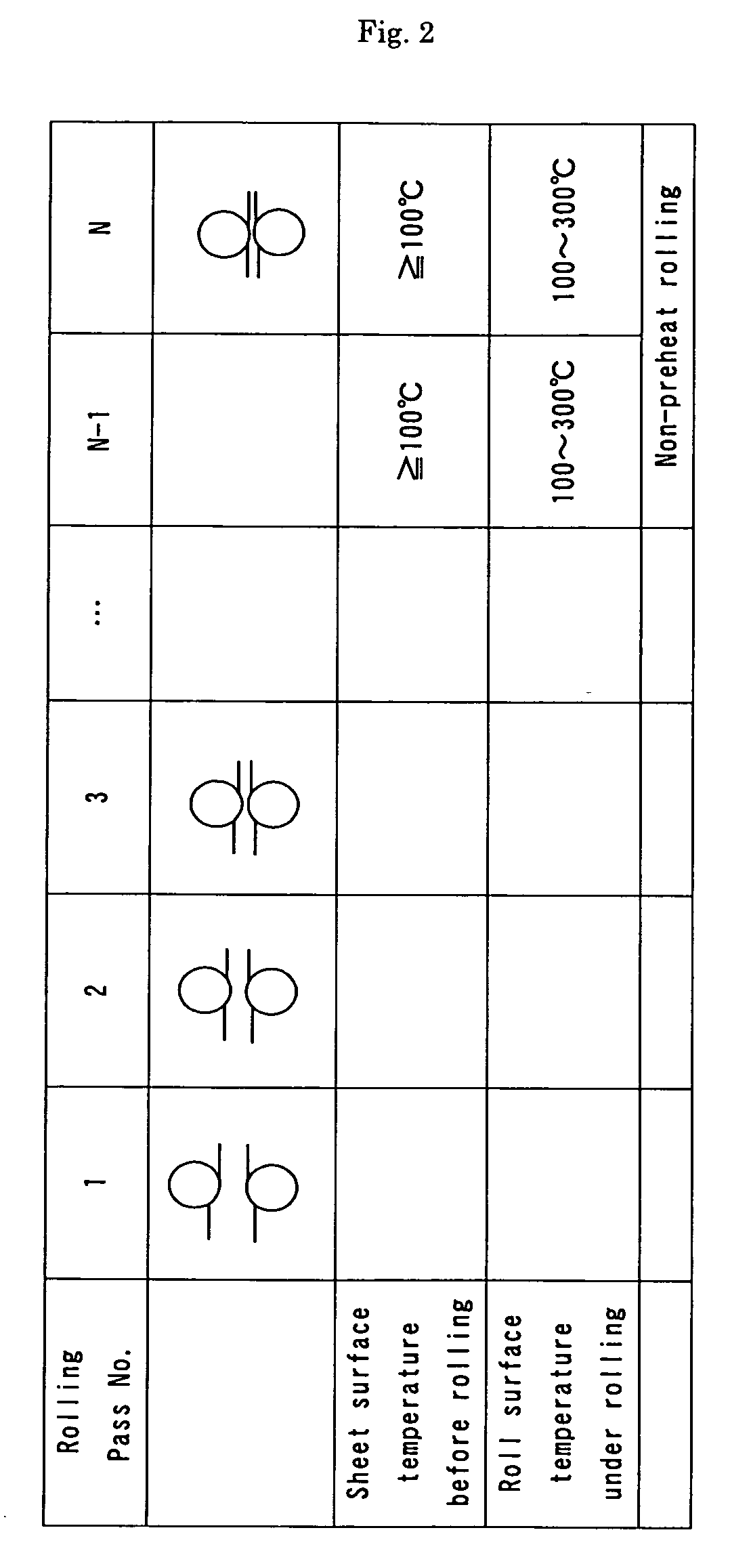Magnesium alloy plate and method for production thereof
a technology of magnesium alloy and rolling sheet, applied in the field of magnesium alloy sheet, can solve the problems of magnesium alloy's difficult workability, insufficient slip system for plastic processing, and remarkably low warm workability, so as to improve the bendability of the rolled sheet, reduce the strain rate, and remove any residual stress or strain
- Summary
- Abstract
- Description
- Claims
- Application Information
AI Technical Summary
Benefits of technology
Problems solved by technology
Method used
Image
Examples
experimental example 1
Magnesium alloy sheets were produced through a rolling process, and their tensile properties and bending properties were determined for evaluation.
Selection of Alloy
A magnesium alloy belonging to the ASTM AZ31 type was selected as a material to be worked through rolling. This magnesium alloy of AZ31 type contained 3.06 mass % of Al, 0.90 mass % of Zn, 0.01 mass % of Si and 0.57 mass % of Mn with the balance comprising Mg and unavoidable impurities.
Solution Treatment of Magnesium Alloy
Before entering the finish rolling step, the magnesium alloy of the above-described AZ31 type was provided in the form of rolled sheets 12 mm, 8 mm and 6 mm thick, respectively, and those sheets were subjected to a solution treatment for 1 hour at 400° C. The purpose of this process is to remove residual stress or strain induced in the preceding working and to lessen textures created in such working. This solution treatment effectively prevented the magnesium alloy sheets from undergoing unexpe...
experimental example 2
Magnesium alloy sheets were produced through a rolling process, and their tensile properties and bending properties were determined for evaluation.
Selection of Alloy
Similarly to the experimental example 1 above, was selected a magnesium alloy belonging to the ASTM AZ31 type (containing 3.06 mass % of Al, 0.90 mass % of Zn, 0.01 mass % of Si and 0.57 mass % of Mn with the balance comprising Mg and unavoidable impurities).
Solution Treatment of Magnesium Alloy
In the same manner as in the experimental example 1 above, before entering the finish rolling step, the magnesium alloy of the above-described AZ31 type was provided in the form of rolled sheets 12 mm, 8 mm and 6 mm thick, respectively, and those sheets were subjected to a solution treatment for 1 hour at 400° C. in order to remove residual stress or strain induced in the preceding working and to lessen textures created in such working.
Rolling
As in the experimental example 1 above, to finish roll the magnesium alloy i...
PUM
| Property | Measurement | Unit |
|---|---|---|
| Grain size | aaaaa | aaaaa |
| Temperature | aaaaa | aaaaa |
| Temperature | aaaaa | aaaaa |
Abstract
Description
Claims
Application Information
 Login to View More
Login to View More - R&D
- Intellectual Property
- Life Sciences
- Materials
- Tech Scout
- Unparalleled Data Quality
- Higher Quality Content
- 60% Fewer Hallucinations
Browse by: Latest US Patents, China's latest patents, Technical Efficacy Thesaurus, Application Domain, Technology Topic, Popular Technical Reports.
© 2025 PatSnap. All rights reserved.Legal|Privacy policy|Modern Slavery Act Transparency Statement|Sitemap|About US| Contact US: help@patsnap.com



